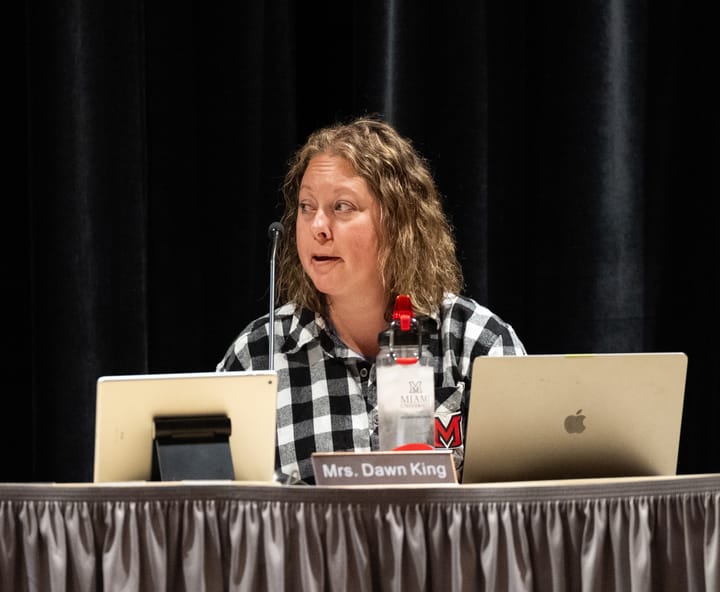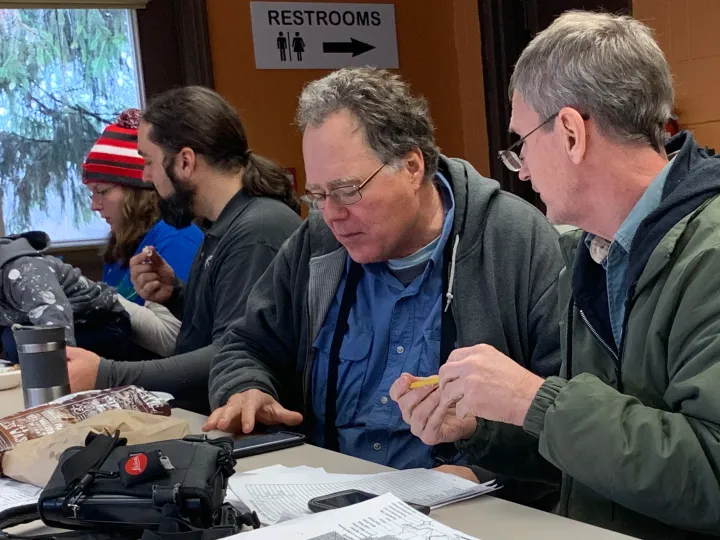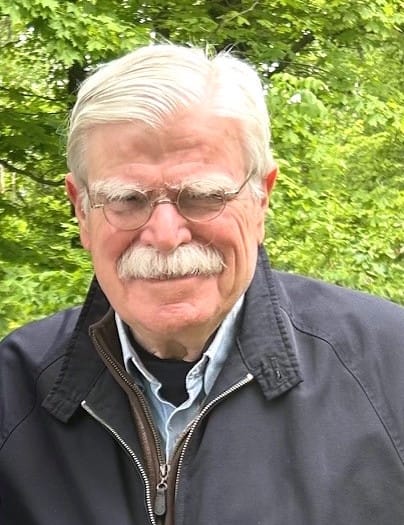Oxfordians have chance to give input on bicycle and pedestrian master plan at open house
Sidewalks and blindspots were also up for conversation.
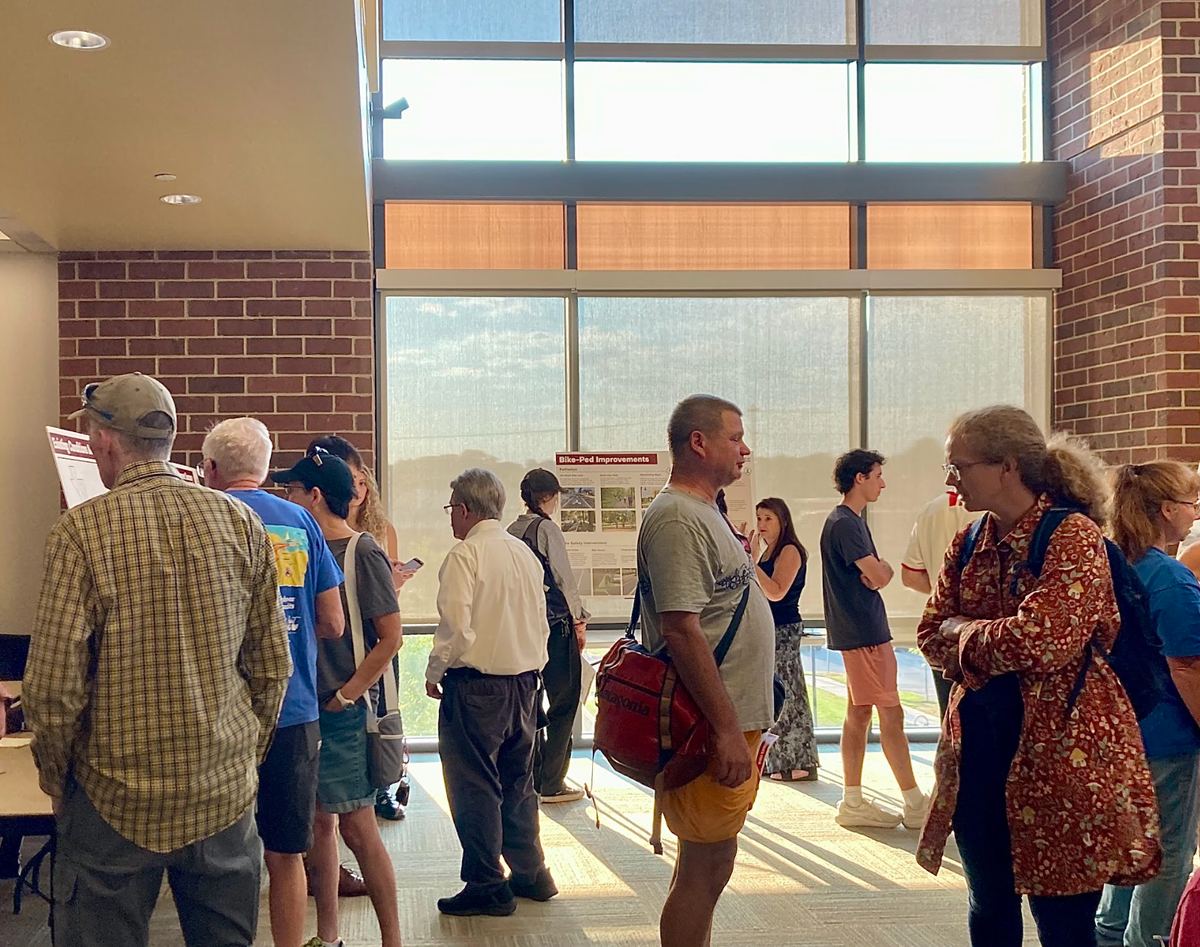
Oxford community members had the chance to learn about and discuss multiple preliminary renderings of the city’s bicycle and pedestrian master plan at a public open house Wednesday, Sept. 17. Hosted by the Oxford Parking and Transportation Advisory Board (OPTAB), the meeting was held in the Havighurst Room of the Lane Library.
The renderings showcased at the open house were a part of a community survey conducted by the firm hired by the city, KZF Design.
According to the KZF Design website, the group is a Cincinnati-based architecture, engineering, interior design and planning and landscape firm. The group has been involved in local projects such as work with the Oxford Area Trails System (OATS) and Miami University building renovations.
KZF Design’s survey about the Oxford bicycle and pedestrian included a map of Oxford, and survey respondents could mark specific places “where walking or biking feels unsafe or difficult,” according to the survey.
Based on the feedback, KZF Design, as well as the assisting civil engineering firm Bayer Becker and transportation engineering firm 143 Engineers, presented six different conceptual designs. This included replacing and widening sidewalks on College Avenue and Sycamore, Chestnut, Spring and Main streets. A new ten foot sidewalk was recommended for Locust Street. These designs were previously presented to OPTAB during a meeting on Aug. 18.
During the open house, those attending were asked by Eric Anderson, KZF Design vice president and planning director, to rank the priority of each route, as well as make further suggestions.
“We are trying to prioritize today and understand what you think is most important,” said Anderson while addressing those at the meeting.
Sam Perry, Oxford’s community development department director, added that OPTAB is also looking for public feedback and thoughts about potential north-south connectors through town.
Large poster boards of the conceptual designs were provided, and participants marked each design’s level of importance. The public ranked the designs from one to four, with one being of top priority.
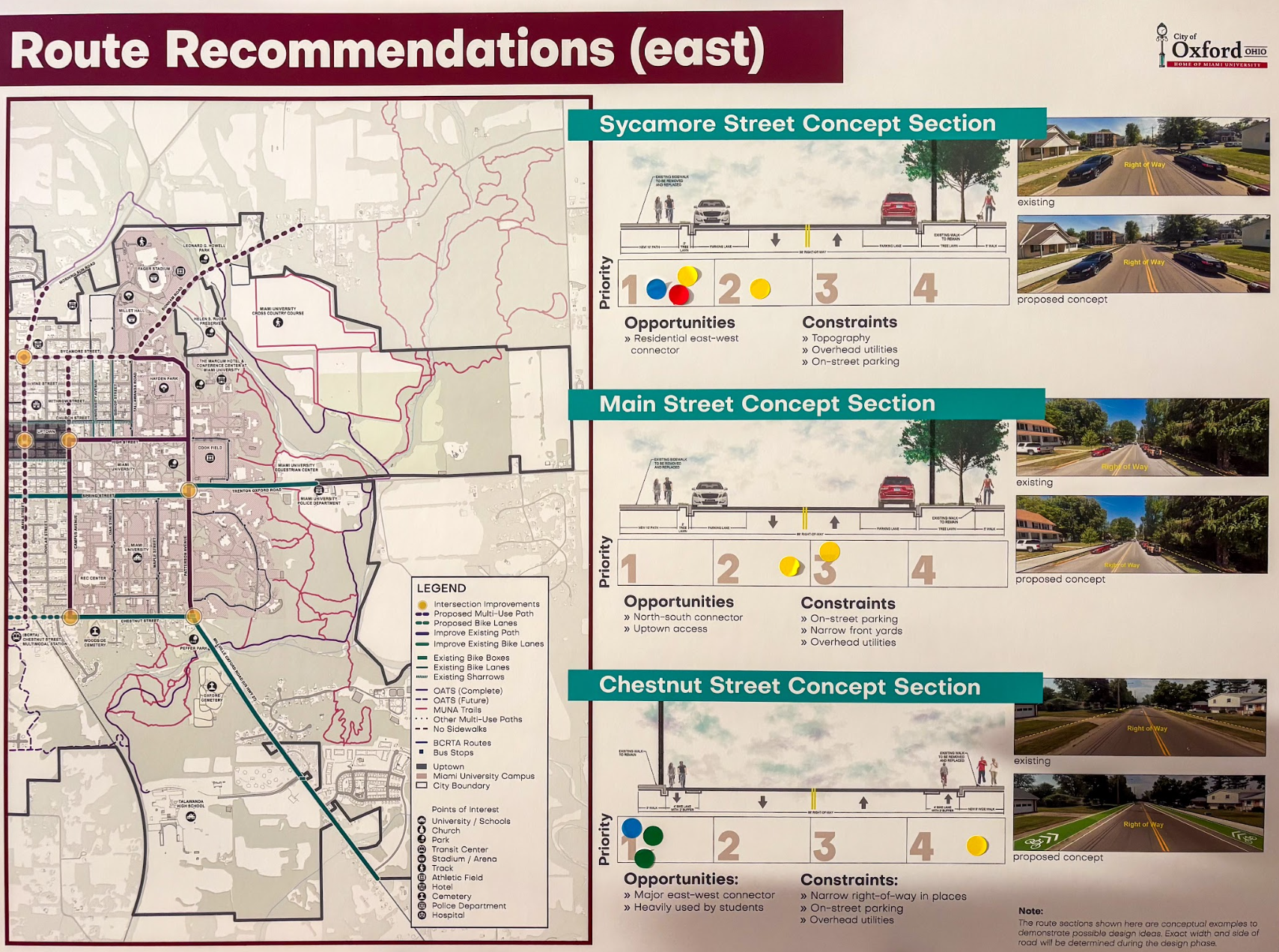
For the east side of Oxford, which consisted of route recommendations for Sycamore, Main and Chestnut streets, the Main Street recommendation was ranked as the lowest priority of the three. Recommendations for Sycamore and Chestnut streets were equally marked by the attendees as being of top priority.
As for the west side of the city, recommendations for Locust and Spring streets, as well as College Avenue, were all parked as being of top priority. The route recommendation of Locust Street claimed the most votes, followed by Spring Street and then College Avenue.
Anderson also asked those who were in attendance for the open house to place sticky notes on a large map printed on one of the boards to bring to light other safety related issues they wish to be addressed.
Some suggestions pointed out areas where vision is easily blocked, such as the intersection of College Avenue and Chestnut Street, where the “utilities block (the) view,” wrote one individual.
Another individual mentioned the presence of vegetation on the intersections of Autumn Drive and Brookville Road are a safety concern, the author of the note citing they were “almost hit biking by (a) car” as proof of the spot’s potential danger.
A third person in attendance commented that “creating sidewalks where they don’t exist, but needed badly, should be the priority before improving the already existing sidewalks,” in reference to Locust Street.
Sidewalks have been of great debate recently among various city and community members. During an Oxford City Council meeting on Aug. 19, discussion involving a resolution entitled “Affirming The City of Oxford’s Policy Commitment To Safe, Accessible, And Complete Neighborhood Streets,” a member of the public spoke up.
T.J. Meloy, a local lawyer, explained that both he and his wife are blind, and there are various stretches of road within walking distance that do not have sidewalks.
“Streets are not complete or accessible if there are no sidewalks,” Meloy told the city council.
Separately after the recent open house, Meloy commented to the Oxford Free Press that he “applaud(s)” the walking and biking paths and connections to local trails.
“But that doesn’t help people get out of their own neighborhoods,” Meloy said, “you still have to get (to the) trail.”
Meloy added that not everyone has the “freedom of options.”
Additionally, there was speculation at the open house about how certain route recommendations, if adopted and implemented, could cause sentimental upsets within the community.
OPTAB board member George Fisher added that many people over the years have planted trees in the space between the sidewalk and the roadway, but then get upset at its potential demise when city plans such as these come into the works.
According to Fisher, “Hypothetically, they can say, ‘I want wide sidewalks, but I don’t want you to take my tree.’”
Comments like this were welcome, as Anderson emphasized the importance of community input during the early stages of such a plan, mentioning that the public can also provide online feedback.
“The listening continues outside of this meeting,” said Anderson. “If you remember something tomorrow or a week from now, you can provide your feedback.”
Anderson explained that the firm is working with the city to finalize recommendations based on the feedback, develop plans and cost estimates, while working to identify phasing and funding sources, adopting the master plan and applying for grant funds.
Anderson said, “this is just a master plan. This is a starting point.”
On Saturday, Oct. 4 from 9-11 a.m., the city is hosting a bike tour around town to give community members a chance to give their input. Those interested are asked to RSVP, and to meet at the Oxford Municipal Building, 15 S. College Ave.


